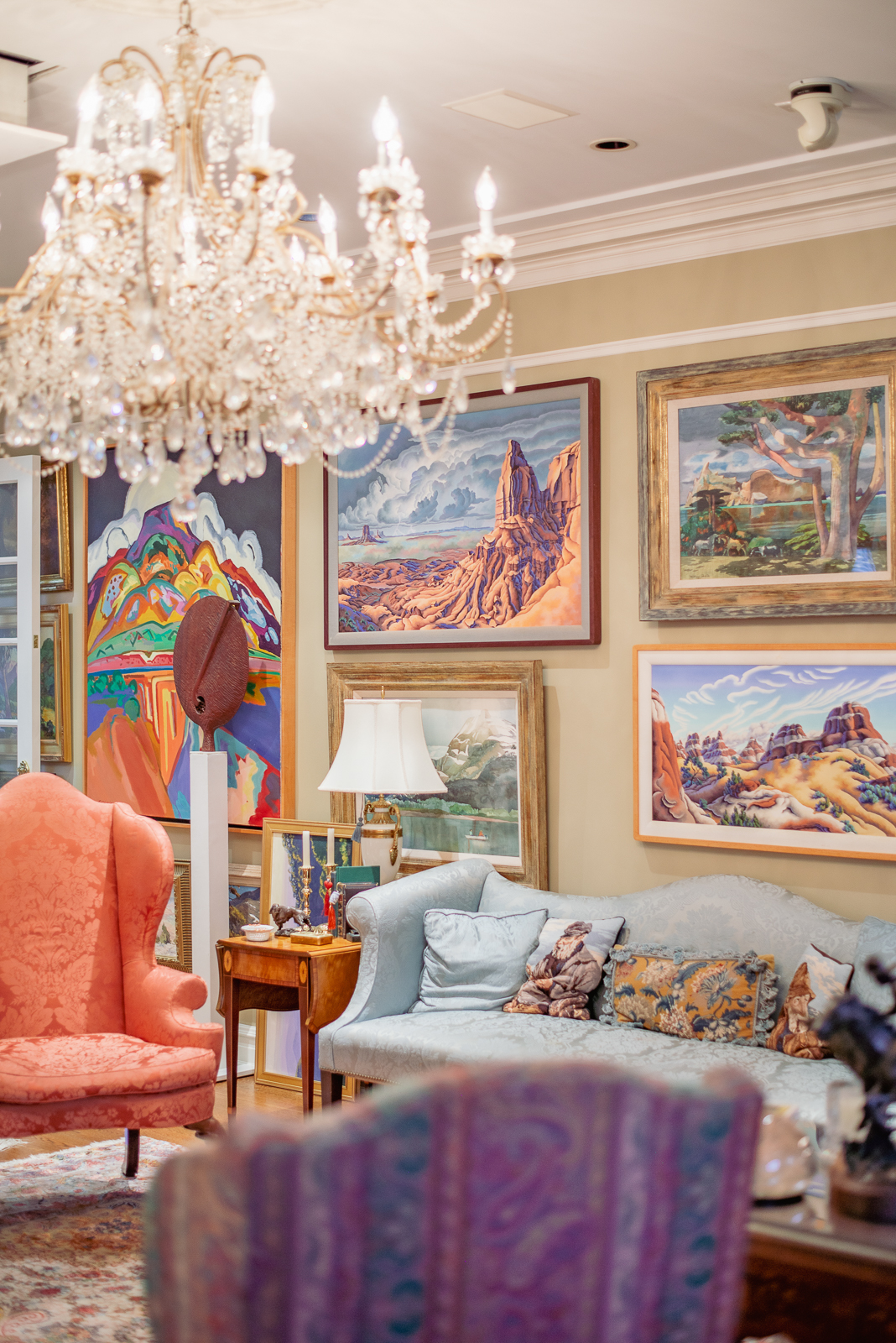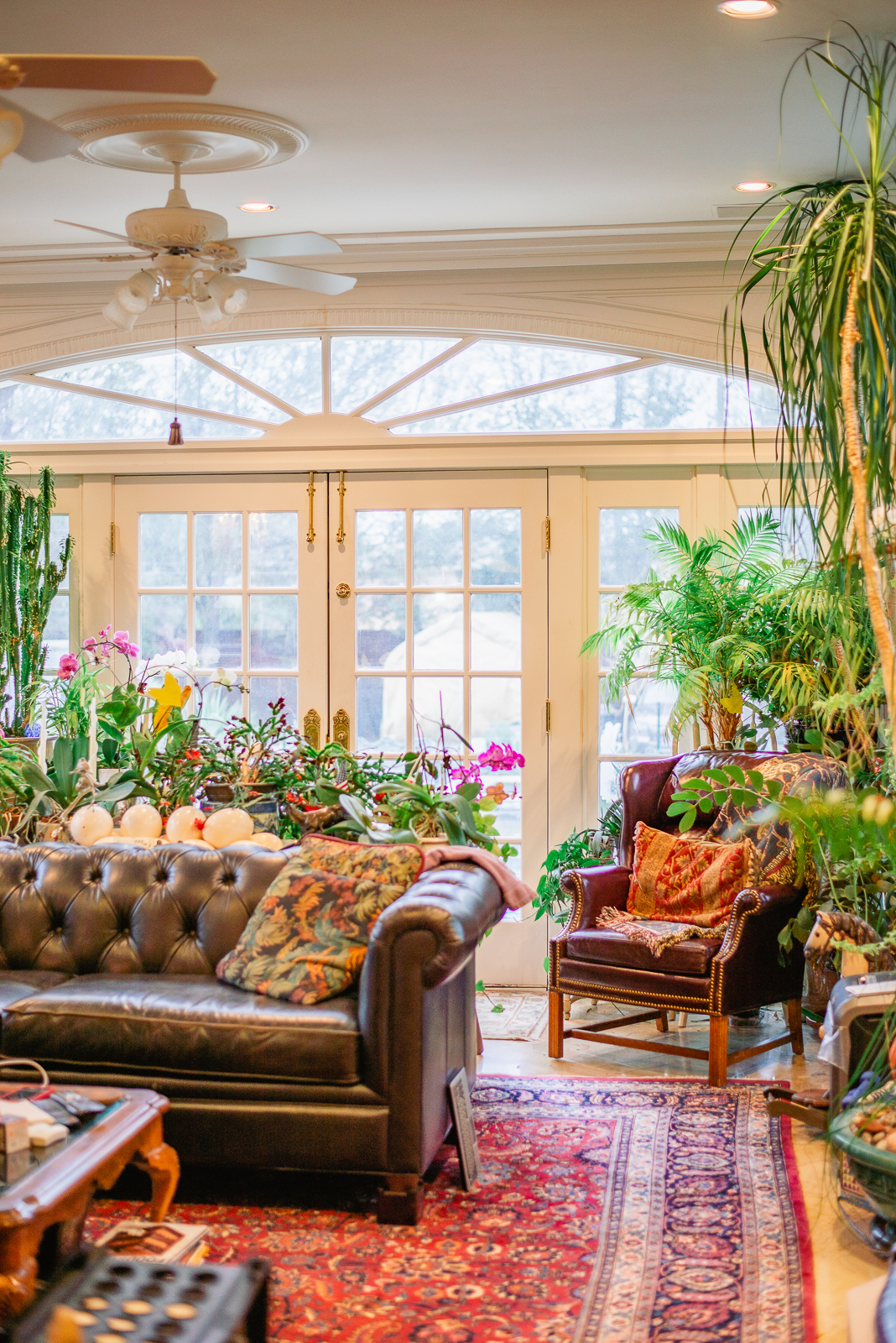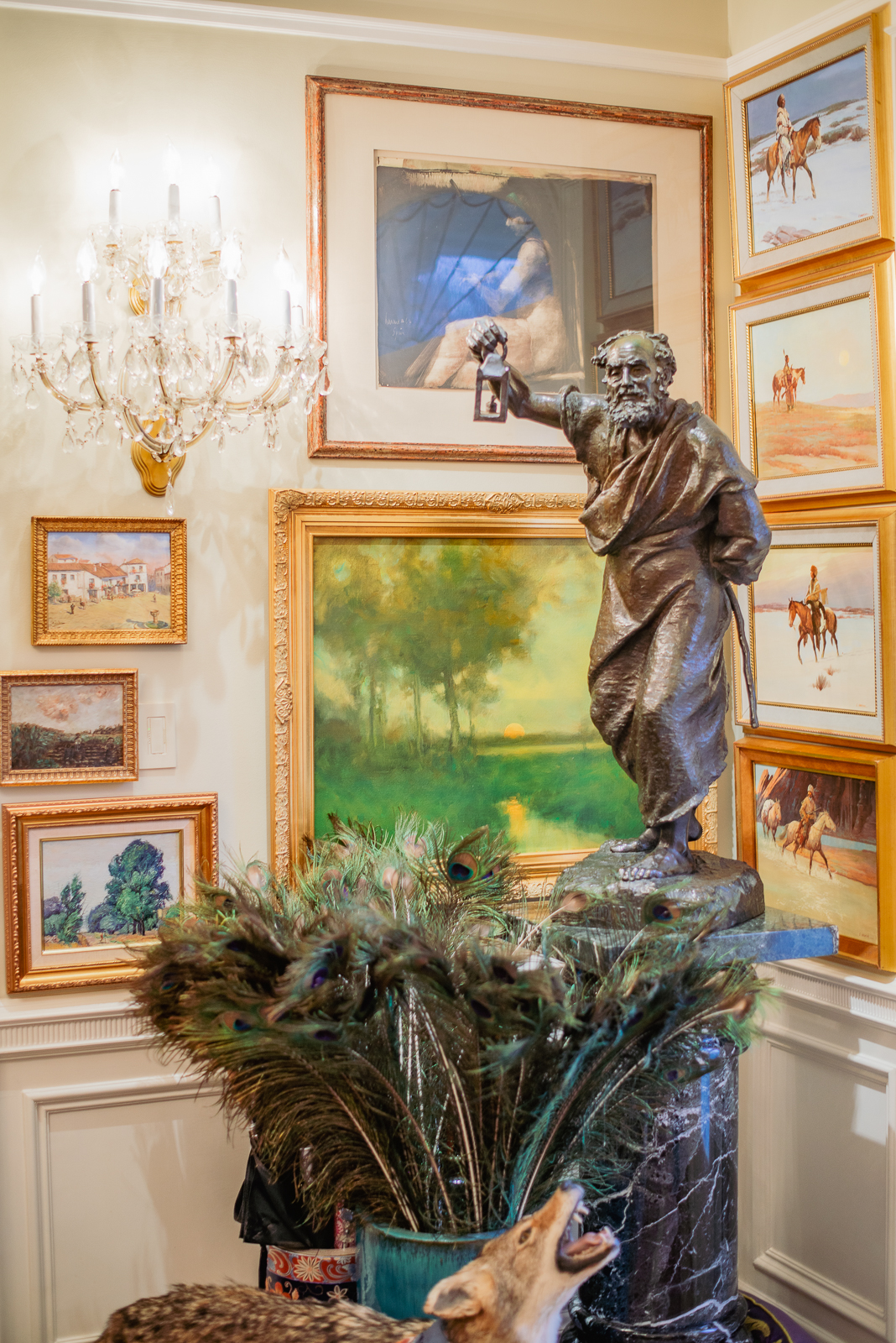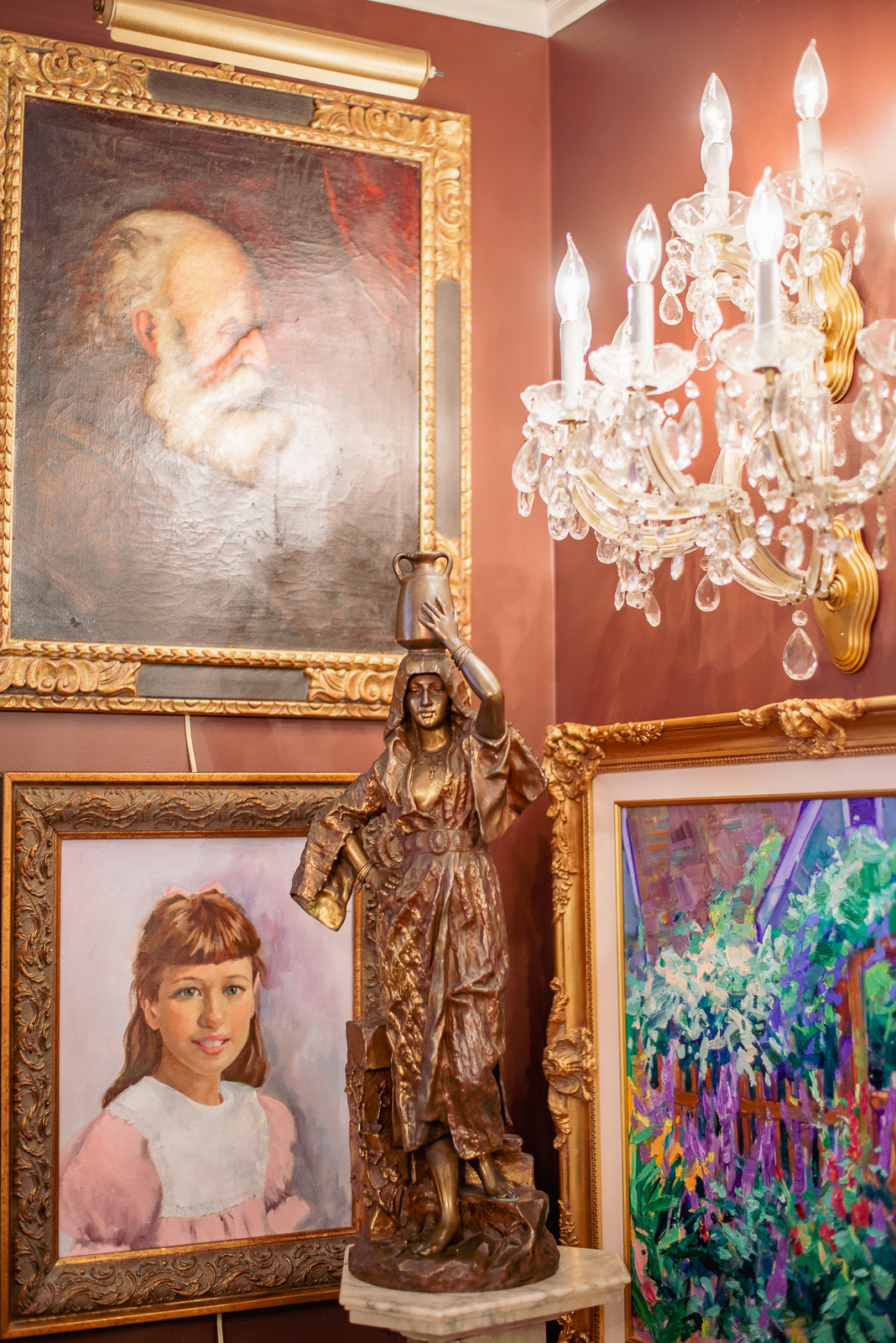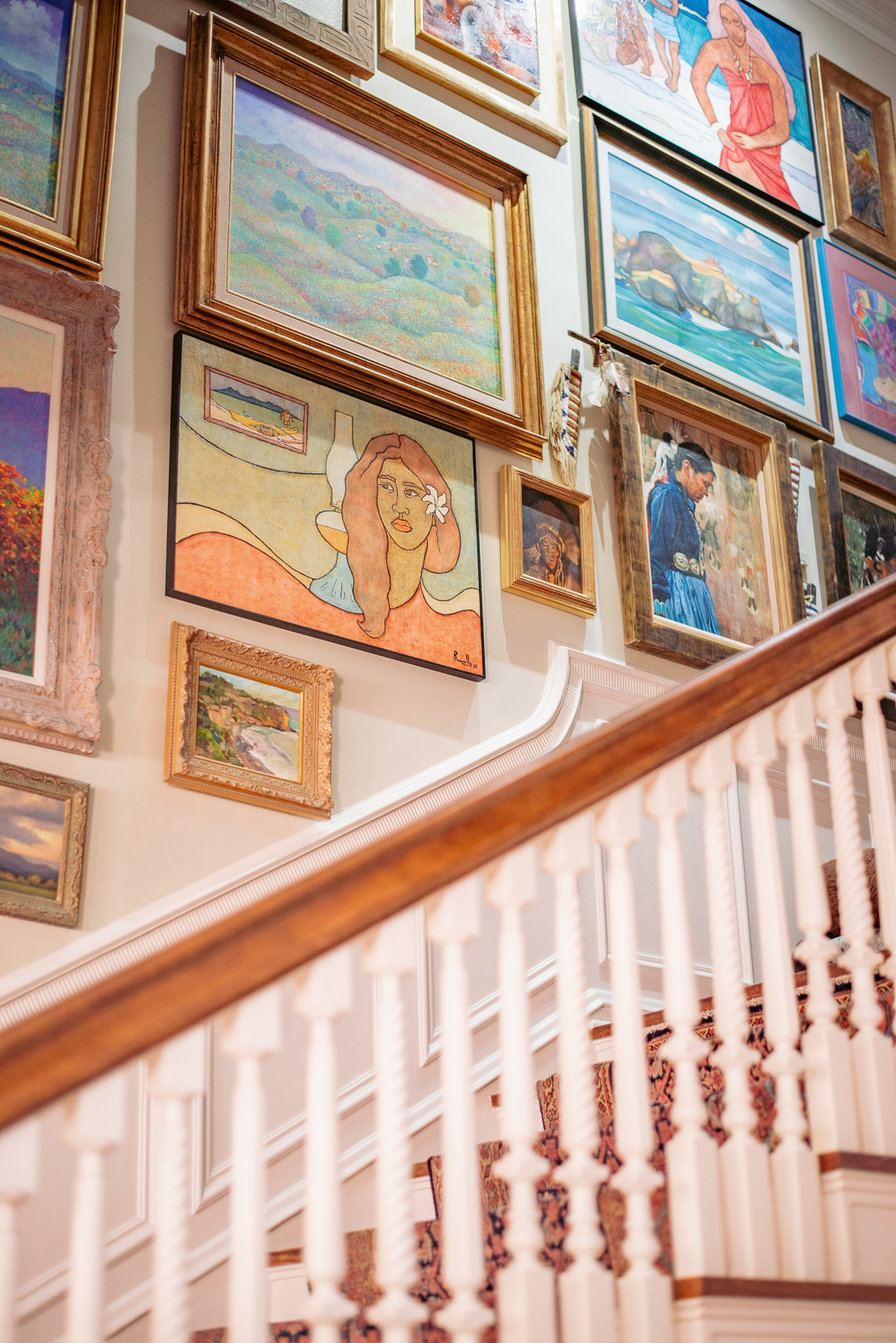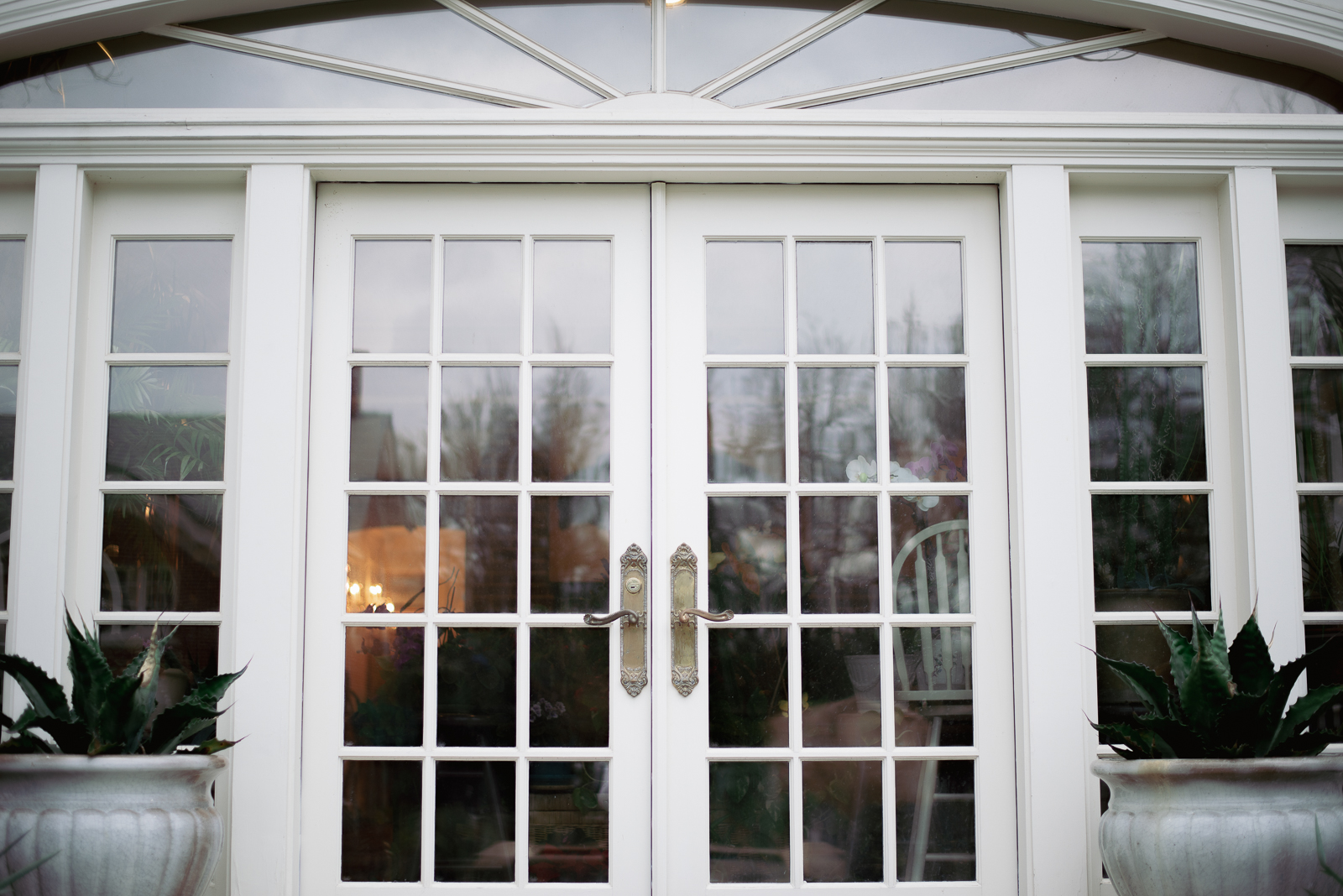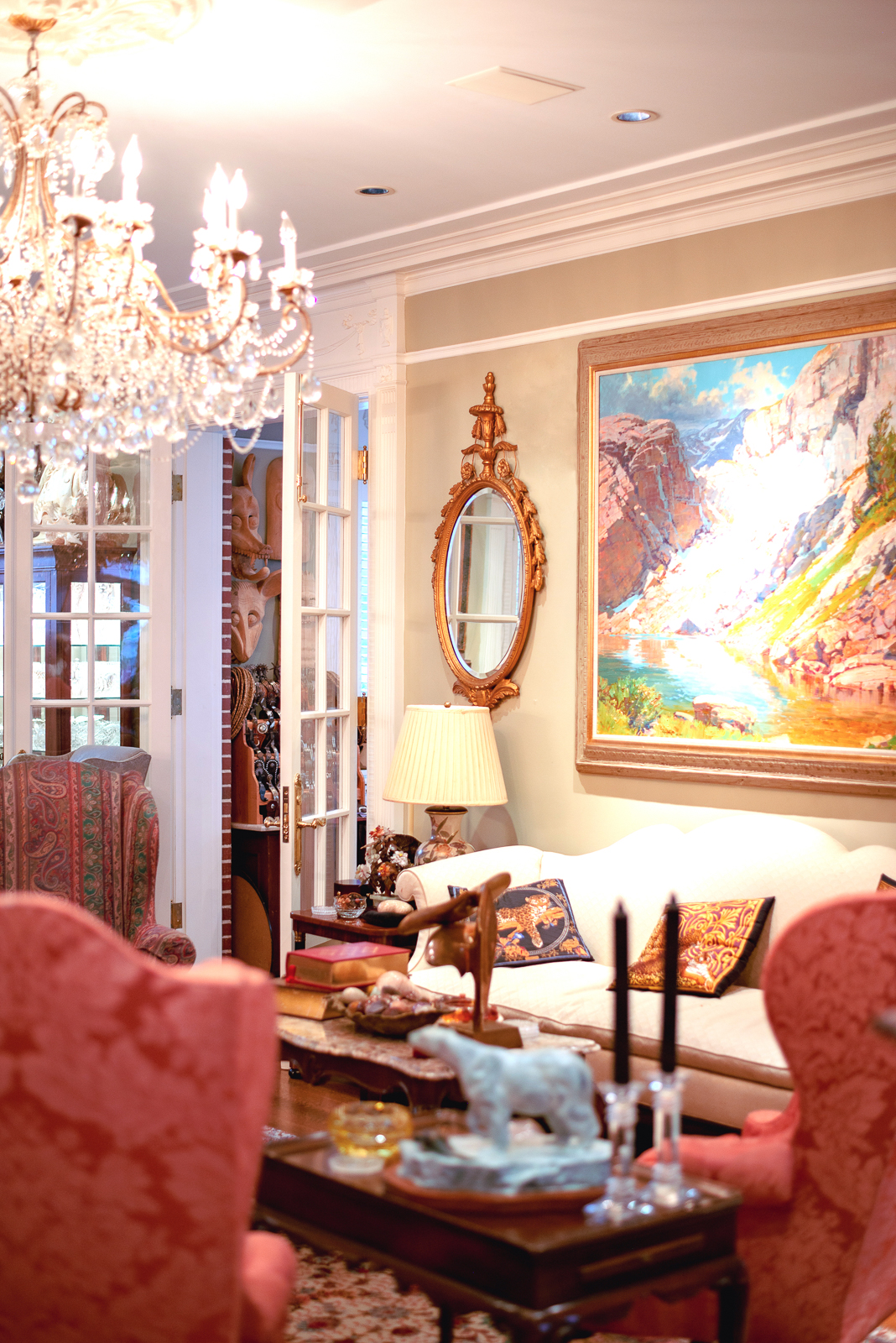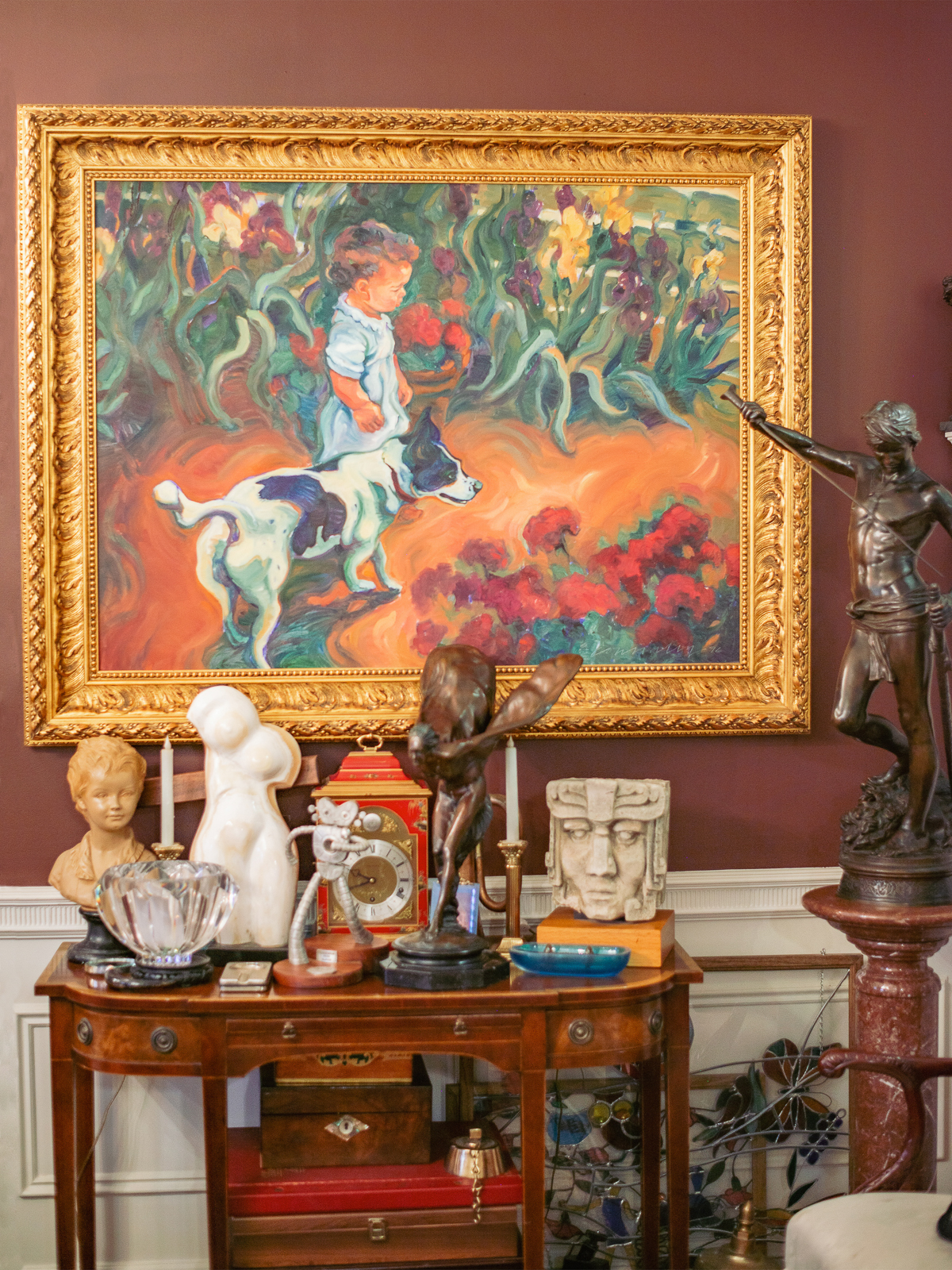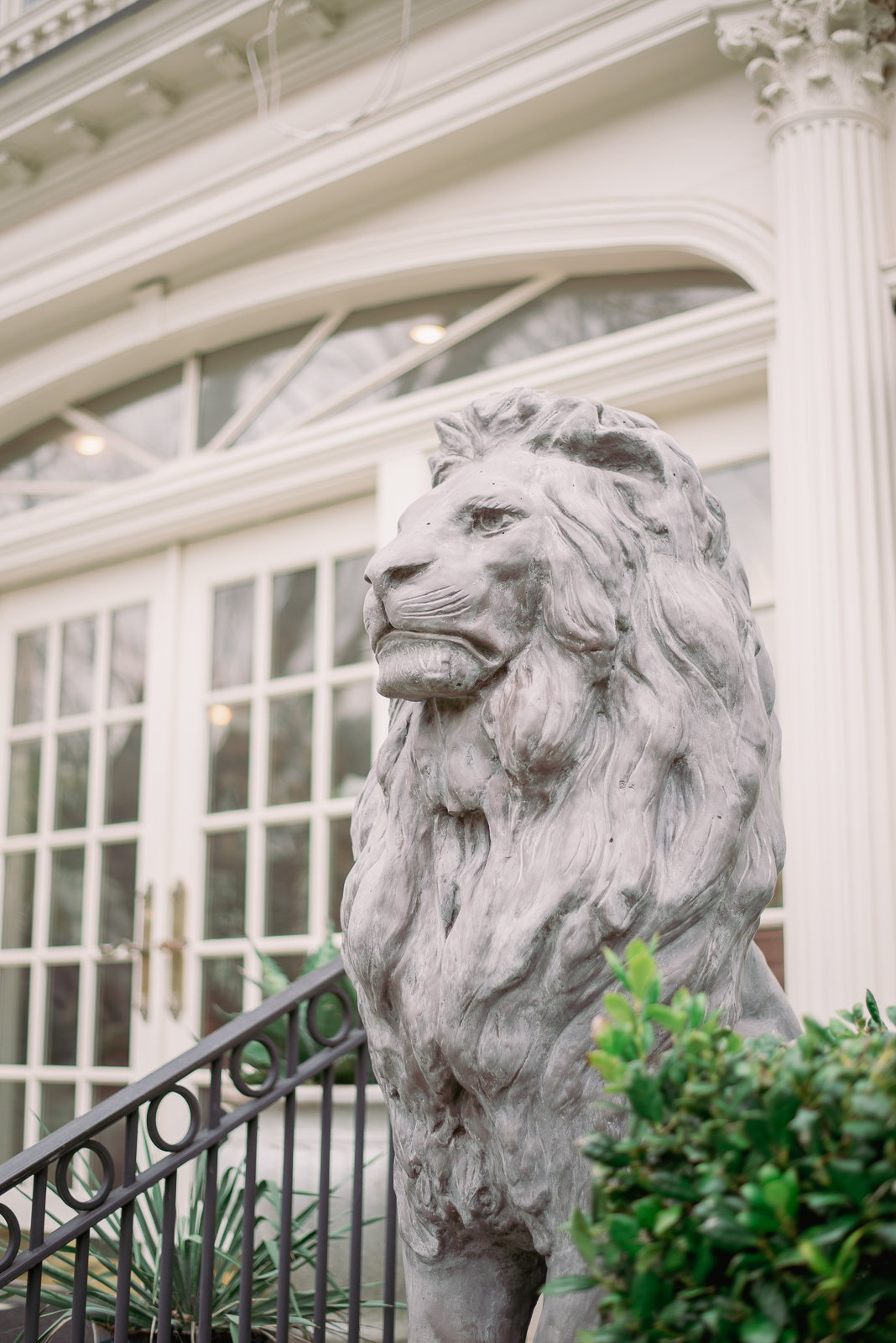There were 200 pigeons living in the attic. Three feet of water was standing in the basement. Some of the flooring on the first level had rotted because a previous owner used it as a dog kennel. Parts of the floor on the second story rotted, too, because of a water leak, meaning the roof had issues. Animals were living in the columns in what’s now the sun room. Sections of the internal gutter system were rusted. Greasy soot had accumulated on all of the walls.
Fixer-upper is an understatement for the Georgian Revival house on Swiss Avenue that David and Jean Dean bought in 2000.
It took 3 1/2 years to renovate the home before the Deans moved in 2003.
“We would never have purchased the house if it hadn’t been structurally well-built,” Jean says.
Plus, they loved the historical neighborhood and the home, which was built in 1916 for G.M. Taylor and most likely designed by Hal Thomson, they say. One of their favorite features is the staircase, each step made with one piece of hardwood.
So when they did the renovations, they did them properly.
“We’re all historic preservationists of the first order,” David, an attorney and former Texas Secretary of State, says of Swiss Avenue residents. “It’s not an academic exercise for us.”
A lot of that work happened inside the home.
But outside the home, the historic district guidelines dictate how renovations can be done, and homeowners must get their plans approved before construction can begin.
One of the projects the Deans wanted to complete was extending the second story over the sun room to create space for a closet off the master bedroom.
The addition would be visible from the street, but it would look identical to the existing second story. Normally, closet space isn’t something that the landmark commission or neighborhood task forces or city council care about. But the Deans had to make a case for it. And ultimately, they were successful.
“They spent 30 minutes on whether Ross Perot would get $190 million of tax incentive for American Airlines stadium,” David says of one council meeting at the time. “And they spent 5 1/2 hours on whether Jean Dean was getting a place to hang her clothes on Swiss Avenue.”
From the outside, the addition, designed by Todd Hamilton of Hamilton and Ward Architecture with help from Jay Henry, blends seamlessly into the original structure. That’s true even from the backyard, which provides the Deans’ favorite view of the house. Surrounded by a pool, manicured shrubs and a sea of cactuses and succulents, the rear of the property has hosted countless soirees over the years.
“We like the flow of the house, just to be able to entertain, where you don’t get stuck somewhere,” Jean says.
The Deans’ commitment to preserving history extends beyond just the architecture. For David, it’s kind of a family tradition. His father, a former president of the Dallas Park and Recreation Board, advocated for bond funds to be allocated to restore the Music Hall at Fair Park, rather than tearing it down, in the 1970s.
They found a fountain sitting inside one of the rooms in the house, and they moved it outside and made it functional.
Some of the decorative molding above and around the doors was damaged, so they repaired it and replicated it in other parts of the home, with the help of artist Brad Oldham, who created “The Traveling Man” statue in Deep Ellum. Oldham also worked on the backplates on doorknobs, inscribing the home’s address and the year it was built.
Jean, an engineer by trade, did some work, too. They found a bookshelf sitting in the home and decided to mount it on the wall and add lights and glass doors for shelving. Then they built a cabinet below it, and Jean sculpted and cast decorative columns for the lower cabinet to match the old bookshelf.
She also designed a way to incorporate the molding around the kitchen window into a cabinet door to preserve the details and create storage space.
And they kept the metal coverings for the milk chute and coal chute.
Though they have maintained the integrity of the home in renovations, the Deans’ personality shines through in the décor. Almost every square inch of wall space is filled with artwork the couple has collected, and still more has yet to be hung.
“I call the house ‘visually stimulating,’” Jean says.
Among the displayed works include a portrait of John Wayne by Dallas artist Desmond Blair, who was born without fingers; a piece by the late New Mexican artist John Nieto; a portrait of David’s father; and landscapes of Blue Lake and Ruby Lake.
Those are in addition to the bronze statue of Abraham Lincoln, David’s spur collection and the stuffed coyote that’s outfitted for each season.
“What do they say?” David says. “If you got it, hang it?”

